Dive deep into the art and psychology behind 10 iconic horror movie posters. From “Psycho” to “Hereditary,” explore how these visual masterpieces captivate and terrify audiences, leaving an indelible mark on horror cinema. Horror movie posters are more than mere advertisements; they are a blend of art and psychology, designed to evoke curiosity, fear, and anticipation.
In the realm of cinematic horror, the first glimpse of terror often doesn’t flicker from a screen but freezes in time on a piece of promotional art: the movie poster. These posters do more than simply announce the film; they encapsulate its essence, tease its terrors, and invite the audience into a world where their deepest fears are brought to life. The design of a horror movie poster is a careful blend of art, psychology, and marketing, aiming to capture the eye, ignite curiosity, and instill a sense of dread—all within the confines of a single image
The Pioneering Art of Horror Posters
Each poster in our selection serves as a case study in the art of evoking emotion. From the stark, haunting imagery of “Psycho” to the unsettling simplicity of “The Exorcist,” these posters transcend their promotional purpose to become iconic symbols of horror. They leverage color, composition, and symbolism to convey the film’s core themes and to instill anticipation and fear in the hearts of viewers. The evolution of horror movie posters reflects broader changes in art, culture, and audience expectations, adapting new techniques and styles to continue captivating audiences.
Psycho (1960)
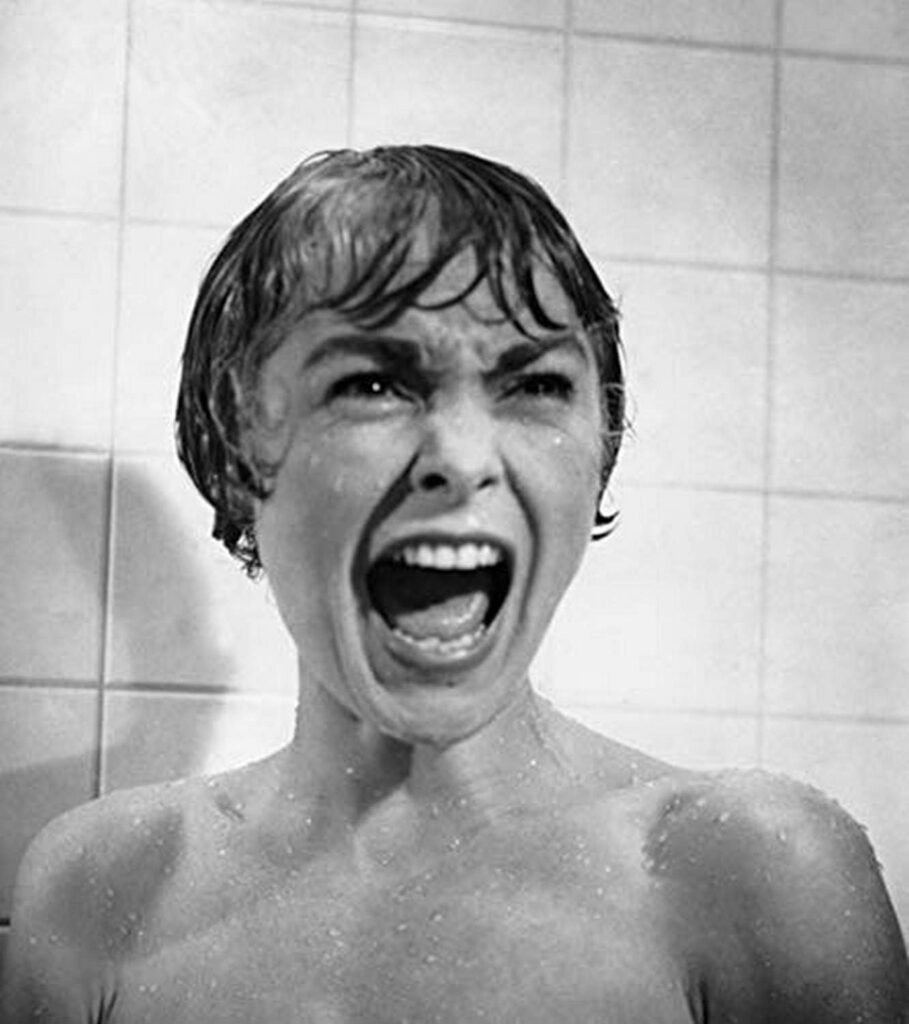
The Pioneering Psycho Poster The “Psycho” movie poster is a testament to Alfred Hitchcock’s mastery of suspense. Its iconic design features the shadowy figure of Norman Bates, hinting at the dual nature of the character without revealing too much. The stark black-and-white color scheme reflects the film’s exploration of stark moral contrasts and the psychological depth of its characters. This poster is not just iconic for its visual appeal but also for how it encapsulates the movie’s groundbreaking narrative—a tale of murder, mystery, and madness at the Bates Motel. The simplicity of the design, combined with the movie’s title fractured across the poster, captures the essence of the film’s tension and fragmented identity.
The Exorcist (1973)
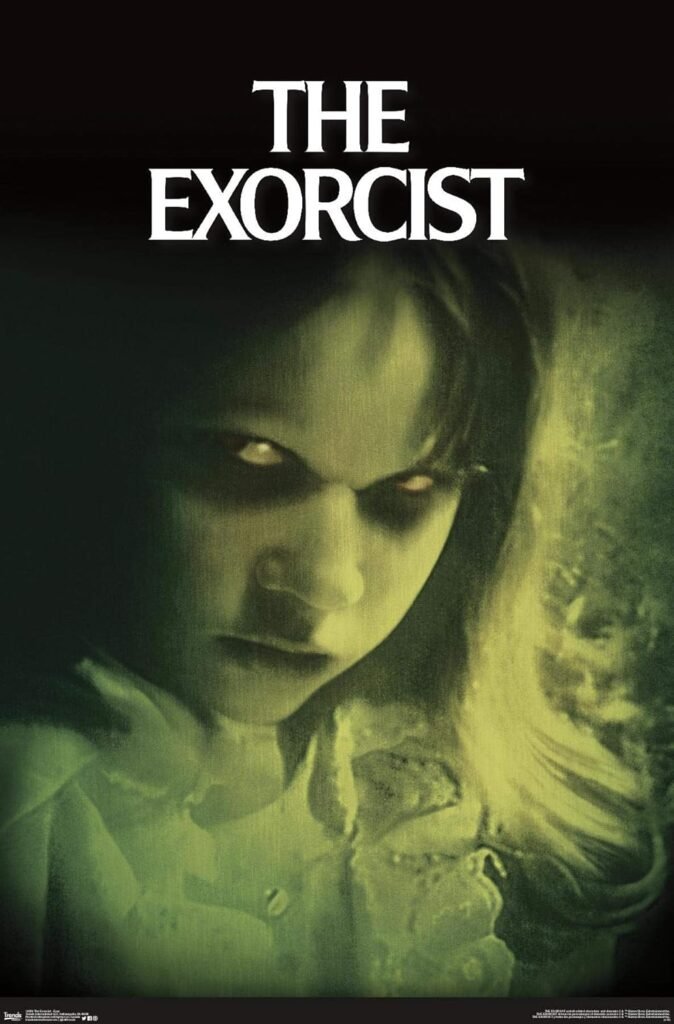
A Demon in the Dark Poster The poster for “The Exorcist” is a masterful exercise in minimalism. Its iconic image of Father Merrin arriving at the MacNeil residence, bathed in an eerie light, perfectly encapsulates the film’s atmosphere of dread. This singular, haunting visual cue sets the stage for the film’s chilling narrative of possession and the battle between good and evil. The poster’s use of shadow and light not only reflects the movie’s thematic darkness but also the fear of what lies unseen. It’s a powerful representation of the film’s impact on the horror genre, emphasizing the terror of the unknown and the power of faith.
Jaws (1975)

Beneath the Surface Poster Steven Spielberg’s “Jaws” features one of the most iconic posters in cinema history. The image of a giant shark, rising ominously from the depths towards an unsuspecting swimmer, taps into a primal fear of the unseen dangers lurking below the surface. This poster perfectly communicates the movie’s suspenseful narrative and the threat of nature’s unseen forces, making it a timeless symbol of horror. The design’s simplicity, coupled with its powerful visual impact, mirrors the film’s ability to elicit fear with minimalistic elements, showcasing the lurking danger of the great white shark.
A Nightmare on Elm Street (1984)
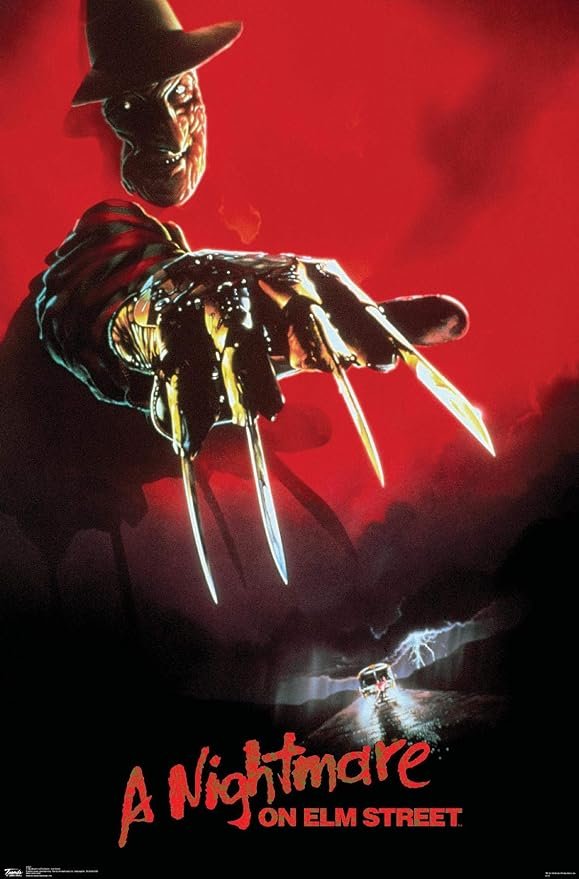
Dreamscape of Terror Poster The “A Nightmare on Elm Street” poster is a vibrant depiction of the film’s nightmarish reality. Freddy Krueger’s menacing figure against the fiery backdrop captures the essence of the dream world he dominates. This poster is iconic for its representation of the film’s central theme—the blurring of lines between dreams and reality. The use of contrasting colors highlights the terror that Freddy represents, making it a memorable visual cue for the movie’s innovative take on horror.
The Silence of the Lambs (1991)
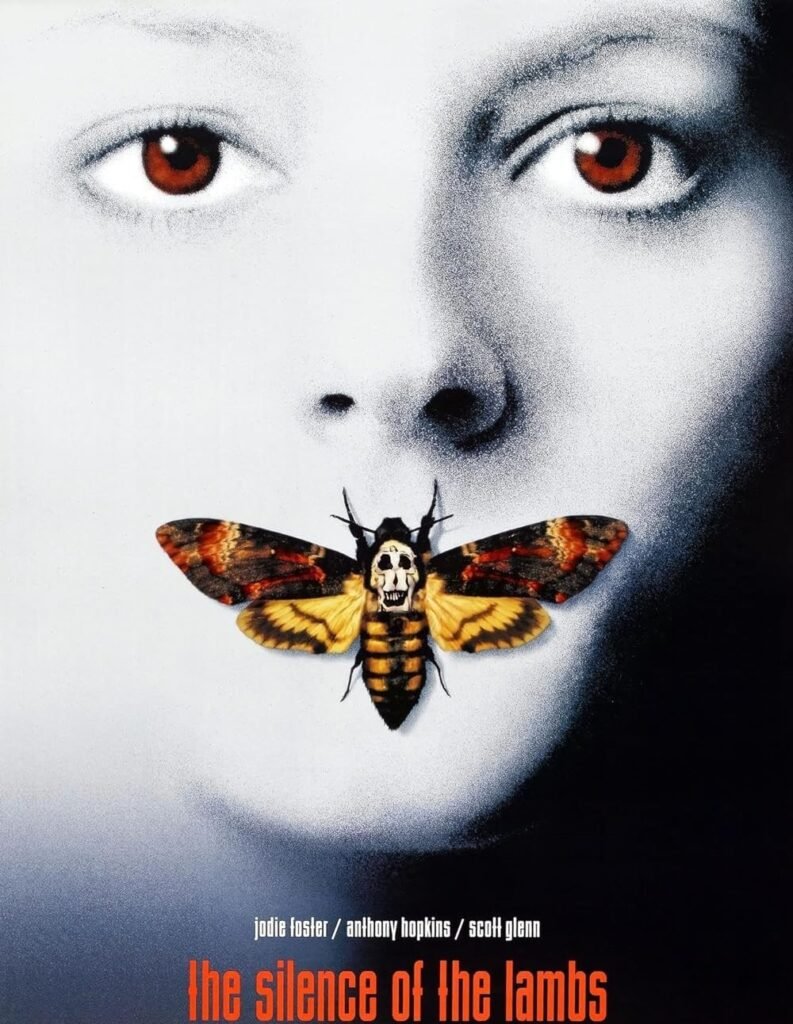
The Eyes That Gaze Back Poster “The Silence of the Lambs” poster, featuring Jodie Foster with a moth covering her mouth, is an iconic representation of the film’s themes of transformation and silence. The moth, with its skull-like pattern, not only hints at the story’s darker elements but also symbolizes the metamorphosis of its characters. This poster is a subtle yet powerful representation of the movie’s psychological depth, showcasing the complexity of its narrative and the chilling brilliance of its execution.
The Blair Witch Project (1999)
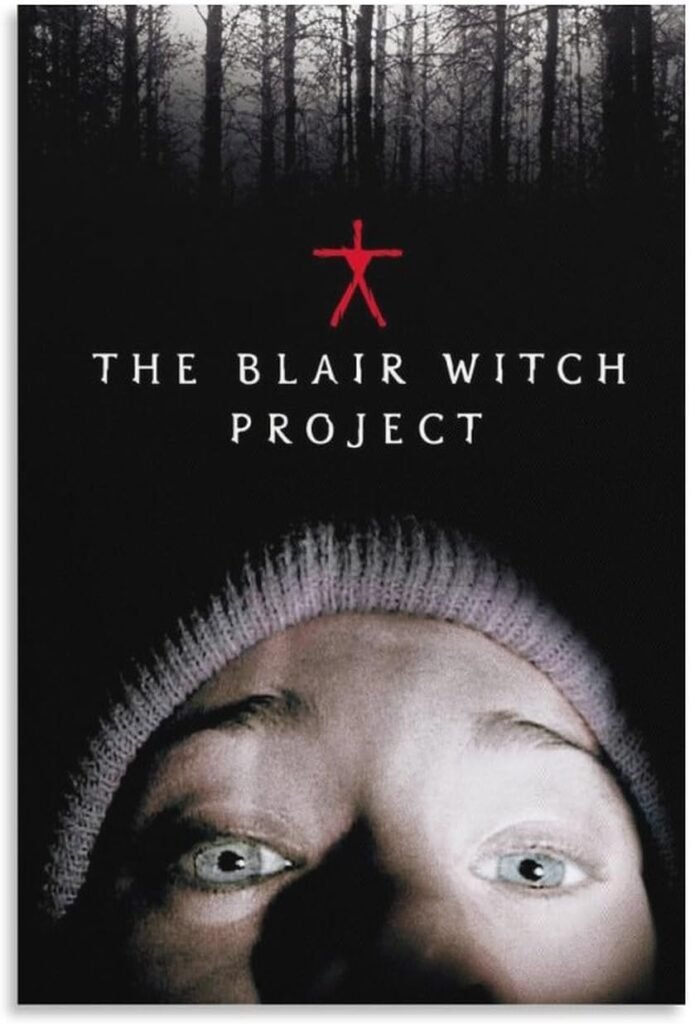
Lost in the Woods Poster The minimalist poster of “The Blair Witch Project,” with its documentary-style approach, changed the horror landscape. The image of the woods at dusk, coupled with the film’s title, evokes the terror of being lost and alone, mirroring the film’s found-footage narrative. This poster is iconic for its ability to instill fear through simplicity, reflecting the movie’s innovative approach to horror storytelling.
Saw (2004)
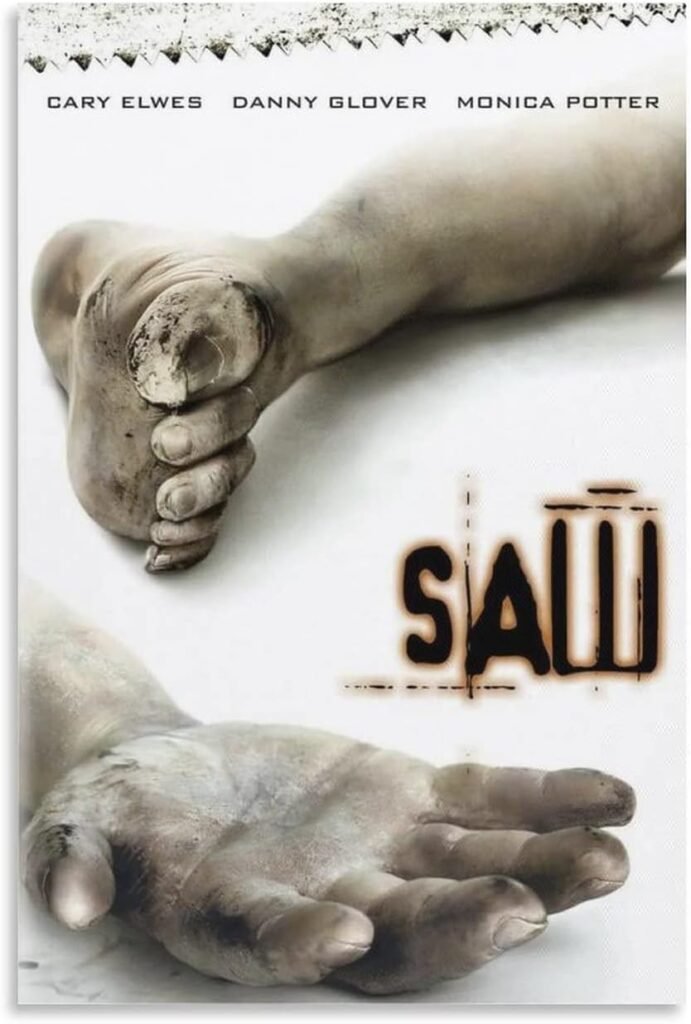
A Game of Survival Poster The “Saw” movie poster, with its chilling imagery of a bloodied hand and a jigsaw piece, captures the essence of the film’s gruesome premise. The clinical, stark background highlights the movie’s theme of survival under horrific conditions. This poster is iconic for its visual representation of the killer’s twisted logic and the moral dilemmas faced by the characters, encapsulating the film’s contribution to the horror genre.
Paranormal Activity (2007)

Unseen Fear Poster “Paranormal Activity’s” poster utilizes night-vision imagery to convey the terror of the unseen. The image of a couple asleep, unaware of the looming presence, taps into the fear of what haunts us in our most vulnerable moments. This poster is iconic for its portrayal of the film’s premise of unseen terror, showcasing the effectiveness of minimalism in evoking fear.
It (2017)
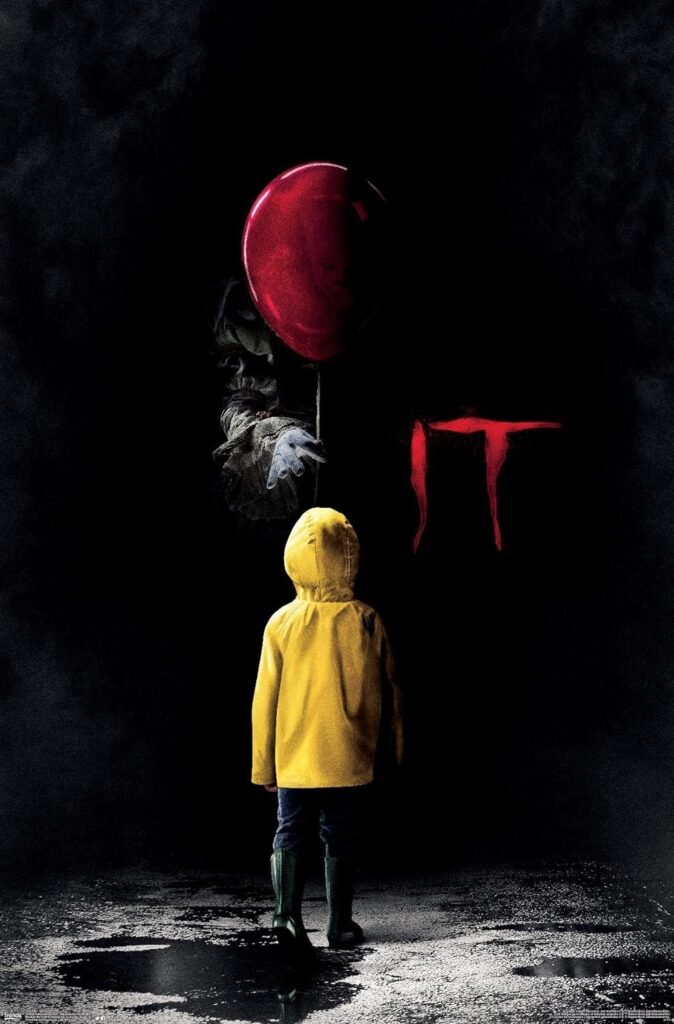
The Horror Reimagined Poster The 2017 adaptation of Stephen King’s “It” features a poster with Pennywise the Clown peering from the darkness, embodying childhood fears made manifest. The use of shadows and the red balloon creates a haunting contrast, making it an iconic representation of the film’s theme of fear and innocence lost.
Hereditary (2018)
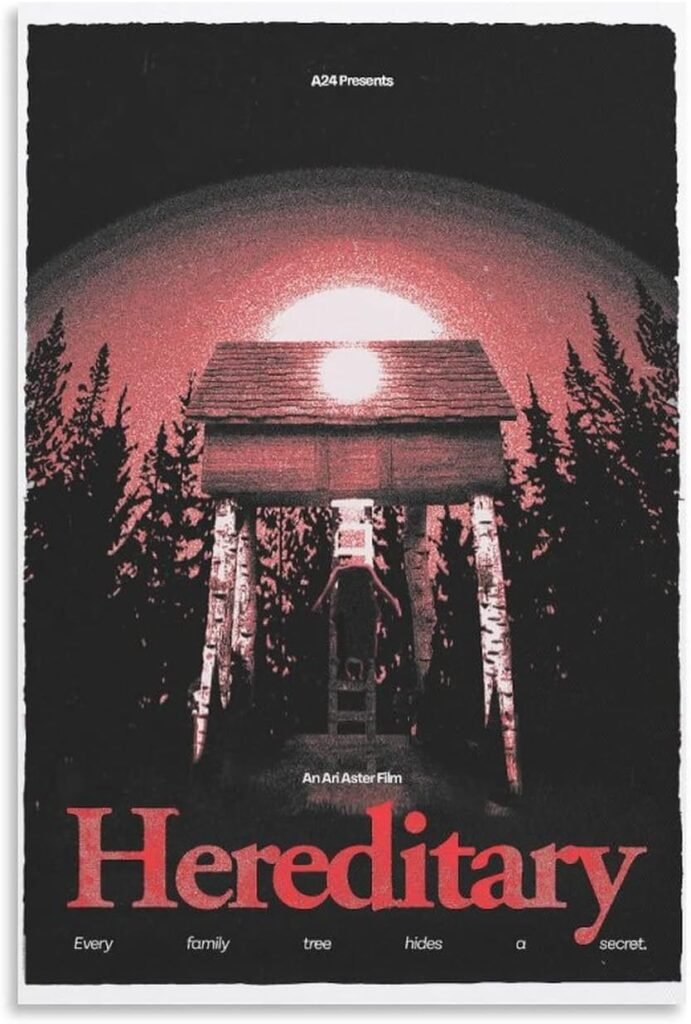
A Legacy of Horror Poster “Hereditary’s” poster, showing Toni Collette’s character in a diorama, is a haunting visual metaphor for the film’s exploration of family and fate. The use of the miniature setting suggests the inescapable nature of inherited trauma, making it an iconic representation of the movie’s deep psychological horror.
The Psychological Underpinnings of Horror Posters
Horror movie posters are designed to tap into our deepest fears—fear of the unknown, fear of loss, and fear of death. By analyzing these posters, we uncover not just the artistry involved but also the psychological tactics employed to create an immediate emotional impact. The use of shadows, the depiction of menacing figures, and the strategic use of color all play roles in crafting an atmosphere of suspense and terror before the audience ever sees the film.
The Role of Symbolism and Color
In “The Silence of the Lambs,” the moth covering Jodie Foster’s mouth is not just a chilling image but a symbol of transformation and silence, echoing the film’s themes. The strategic use of color, or the absence thereof, in posters like “Psycho” and “The Blair Witch Project,” further communicates the film’s tone and themes, using visual cues to evoke specific emotional responses.
The Lasting Impact of Horror Movie Posters
The iconic posters of horror cinema do more than capture the essence of the films they represent; they stand as enduring pieces of art that continue to influence design and evoke fear. These posters remind us that horror is not just about the shock and gore that unfolds on screen but also about the anticipation, the dread of what’s to come.
As we’ve explored these 10 iconic posters, we’ve seen how they encapsulate entire narratives within a single, compelling image, demonstrating the power of visual storytelling. The art of the horror movie poster, with its deep psychological roots and its ability to connect with our primal fears, continues to captivate and terrify, proving that sometimes the most lasting scares are those that are suggested, not shown.






Pingback: Horror Movie Action Figures: Unleashing the Thrill on Your Shelf - Happybinger
Pingback: 7 Star Wars Movie Posters: Exploring the Galaxy Far, Far Away - Happybinger
Pingback: Top 10 Best Horror Movie Hoodies on Amazon: A Must-Have for Fans - Happybinger